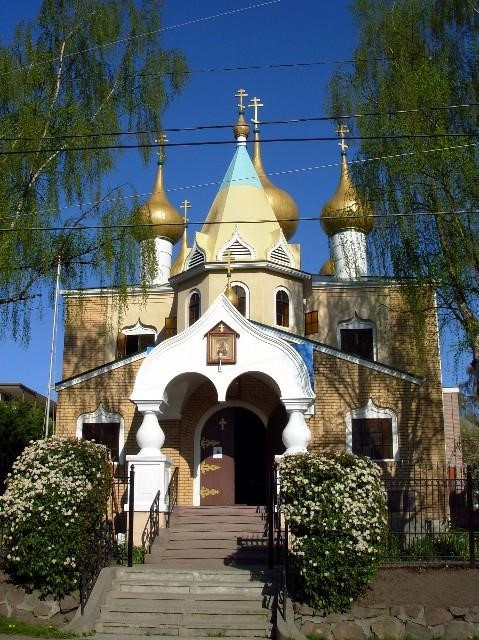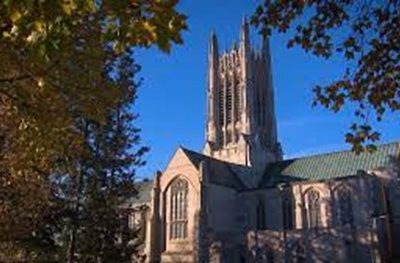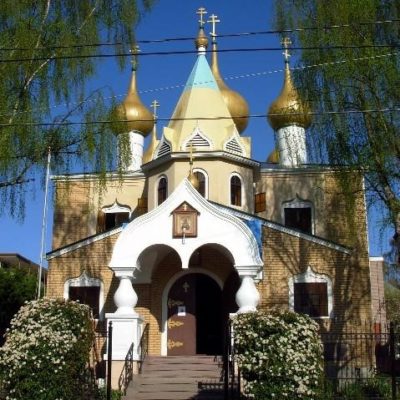Armenian Apostolic Church Catholicossate of Etchmiadzin:

Introduction: On October 27, 1999, The Armenian Apostolic Church/ Catholicossate of Etchmiadzin elected a new Catholicos when Catholicos Karekin I died in June of 1999. His Holiness Karekin II was elected as the 132nd Supreme Patriarch and Catholicos of All Armenians, pontiff of the worldwide Armenian Church. The coronation of His Holiness Karekin II took place at the Mother See of Holy Etchmiadzin located near the capital of Yerevan in the Republic of Armenia.
It is the delegates from each of the dioceses of the Armenian Church who choose the Catholicos. They are elected to a life term. The chief Bishop of the Armenian Church is called the Catholicos which means the universal Bishop. The Catholicos have special anointing which are the most elaborate ceremonies of the Armenian Church. They have two major rights that are exclusive only to the Catholicos: to consecrate the bishops and the blessing of the Holy Chrism. Both the Catholicos of Etchmiadzin and the Catholicos of Cilicia have the rights to consecrate the bishops and the blessing of the Holy Chrism.
There are two Sees known as Catholicossate within the Armenian Church; the Catholicossate of Etchmiadzin and the Catholicossate of Cilicia. The Catholicossate of Etchmiadzin is considered the Catholicossate of all Armenians.
There are two Sees that are known under the name of Patriarchates; The Patriarchate of Jerusalem and the Patriarchate of Constantinople which is now Istanbul, Turkey. The heads of the two Sees are ranked as Archbishops which is not the equal to the Catholicos.
The Patriarchate of Jerusalem maintains many sites in the Holy Land. There is an Armenian Quarter in Jerusalem which covers 1/5 of the old city. The Armenian Patriarchate is in charge of the Church of the Holy Sepulcher along with the Greeks and the Romans.
History
The Armenian Apostolic Church/ Catholicossate of Etchmiadzin was the first church among the heathen nations to embrace Christianity. Christianity began when the Apostles Thaddeus and Bartholomew went to Armenia to preach the Gospel of Jesus Christ and to lay a foundation for the Church. Armenia adopted Christianity as its national religion in 301.
It was St.Gregory the Illuminator who organized the first of the Armenian Churches. St Gregory the Illuminator selected the site of the Catholicossate in the capital city of Armenia which was Vagharshapat. St.Gregory also built the pontifical residence next to the church. This church was first called Holy Mother of God and now called St. Etchmiadzin, which means “the place where the Only Begotten Son has descended”. St. Gregory the Illuminator had a vision where he saw the Only Begotten Son of God coming down from Heaven with a golden hammer in his hand. The appearance of the Son of God was surrounded by an angelic host. Jesus Christ struck the ground with the golden hammer and this located the site of the Mother Cathedral in 302 and which began the new Christian nation according to their belief.
Gregory the Illuminator was authorized as the head of the church and was sent to Caesarea to be ordained as a bishop, making him the first Catholicoi of the Armenian Church. The site of the first Christian Cathedral was near Mount Ararat in Vagharshapat which was then the capital of Armenia. Mount Ararat, which is now in the boundaries of Turkey, is the resting place of Noah’s Ark according to their belief.
There was great political shifts in power bring turmoil to Armenia which caused the Catholicossate to move from place to place over the centuries. When a mass of Armenians migrated to Cilicia in 1045, the Catholicossate with his followers settled there. They remained in the Cilician Kingdom for seven centuries. Only after the fall of the Armenian Kingdom in Cilicia in 1375 did the Church begin to have the role of national leadership. This made the Armenian Catholicos the head of the nation of Armenia.
Historical circumstances led to two Catholicossate, The Catholicossate of Etchmiadzin and The Catholicossate of Cilicia, being organized in the Armenian Church, beginning in 1441. They both have equal rights as well as equal privileges. Both jurisdictions have dominance and both are recognized by the each other. The Catholicossate of Etchmiadzin is located in Yerevan in the Republic of Armenia. The Catholicossate of Cilicia is located in Antelias, Lebanon.
Belief
The Armenian Apostolic Church /Catholicossate of Cilicia belong to the Orthodox group of churches. It is known as the Ancient Oriental Orthodox or Non Chalcedonian Churches. Armenian, Coptic, Ethiopian, and Syrian are part of these churches. The head of the Armenian Apostolic Church and the Chief Bishop and Supreme Head is the Catholicos.
The Armenian Apostolic Church /Catholicossate of Cilicia believe in One God, the Father Almighty who is the creator of Heaven and earth, of all things visible and invisible. Male and female humanity is created in the image and in the likeness of God. It was with Adam when the fall of man happened and then sin entered into the world.
The Armenian Apostolic Church /Catholicossate of Cilicia believe in Jesus Christ as the only begotten Son of God. Jesus Christ came down from heaven, was incarnate born of the Virgin Mary, by the Holy Spirit. He became man, was crucified for us and suffered and was buried. He rose again from the dead on the third day and ascended into heaven and sits at the right hand of the Father. He will come again with glory to judge the living and the dead.
The Armenian Apostolic Church /Catholicossate of Cilicia believe the Holy Spirit was uncreated and was perfect. The Holy Spirit proceeds from the Father and together with the Father and the Son is worshipped and glorified. The Holy Spirit spoke to the prophets and apostles and descended into the Jordan, witnessing the Baptism of Jesus Christ.
The principle service of The Armenian Apostolic Church /Catholicossate of Cilicia is the Holy Sacrifice or the Divine Liturgy. The Bible is read in public in Armenian. Their doctrine is based on the Holy churches Tradition and historic writings from the early church fathers that go back to the time of Christ. The belief is expressed using the Bible, canons, liturgy, church councils, worship, rituals, saints, and religious art.
The faith of The Armenian Apostolic Church /Catholicossate of Cilicia is expressed in the Creed of the Armenian Church and other similar creeds. Their faith is fully expressed through the framework of their worship. The church gathers together and prays, and the result to their prayers becomes the example and foundation of teaching their faith. The traditions of the church define the articles of faith and they are passed on from generation to generation.
The Armenian Apostolic Church /Catholicossate of Cilicia believe the saints are recognizable and should be celebrated. The Virgin Mary also is celebrated at the Feast of the Assumption of the Virgin. A translation of the Scriptures by Sahak and Mesrob is the accepted authoritative Armenian version of the Bible. They believe in seven sacraments; Baptism which is by immersion eight days after the birth of the baby; Confirmation following immediately after the Baptism; Holy Communion which is even given to infants; Penance; Marriage, Ordination and Visitations of the sick. The Armenian Apostolic Church /Catholicossate of Cilicia believe there is only one Baptism for those who are repentant for the remission and the forgiveness of sins. They believe it will be on Judgment Day when Christ will call all mankind who have repented to eternal life in His Heavenly Kingdom and that Kingdom will have no end.
Cite Article Source
MLA Style Citation:
Holstein, Joanne “Armenian Apostolic Church Catholicossate of Etchmiadzin:.” Becker Bible Studies Library Jan 2006.<https://guidedbiblestudies.com/?p=2588,>.
APA Style Citation:
Holstein, Joanne (2006, January) “Armenian Apostolic Church Catholicossate of Etchmiadzin:.” Becker Bible Studies Library. Retrieved from https://guidedbiblestudies.com/?p=2588,.
Chicago Style Citation:
Holstein, Joanne (2006) “Armenian Apostolic Church Catholicossate of Etchmiadzin:.” Becker Bible Studies Library (January), https://guidedbiblestudies.com/?p=2588, (accessed).


